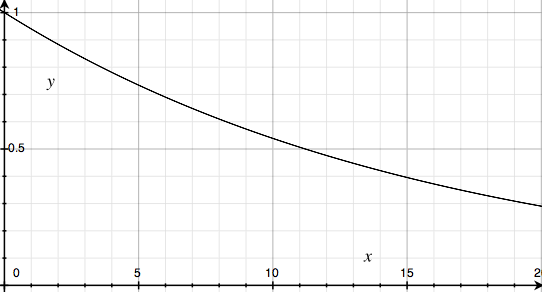The Rankings
The Svenson Rankings are designed to reflect recent form, more so than career long achievements. Therefore these rankings are more subject to fluctuation than statistics like average, which, over time, require more and more extreme results to alter.
The numbers themselves are relatively insignificant, but are comparable. So a higher ranked player is in better form, and an increase in ranking score for a player means their form is improving.
How The Rankings Are Calculated
The rankings for both batting and bowling take into account the player's last 20 innings. As a result of using 20 innings, a player who has recorded less than this number of innings will have a lower ranking, and their score is not comparable to other players who have sufficient innings.
The most recent innings are weighted more heavily than the most recent ones. The weighting follows this curve.

Batting
The batting ranking primarily attempts to reward run scoring, and, to a lessor extent, higher strike rates will receive a higher ranking score. A bonus of 20% is awarded to the batsman for each innings in which they remain not out.
Bowling
The bowling ranking places highest emphasis on wickets, with further reward to the bowler for good strike and economy rates, and reductions for large numbers of runs.
How The Rankings Are REALLY Calculated
Batting

Bowling

NB: The 400 coefficient is arbitrary, in an attempt to make the bowling rankings fall on a similar number range to the batting rankings. The presence of this coefficient makes absolutely no difference, however, on the order of ranking of a group of players.
Return to the Rankings